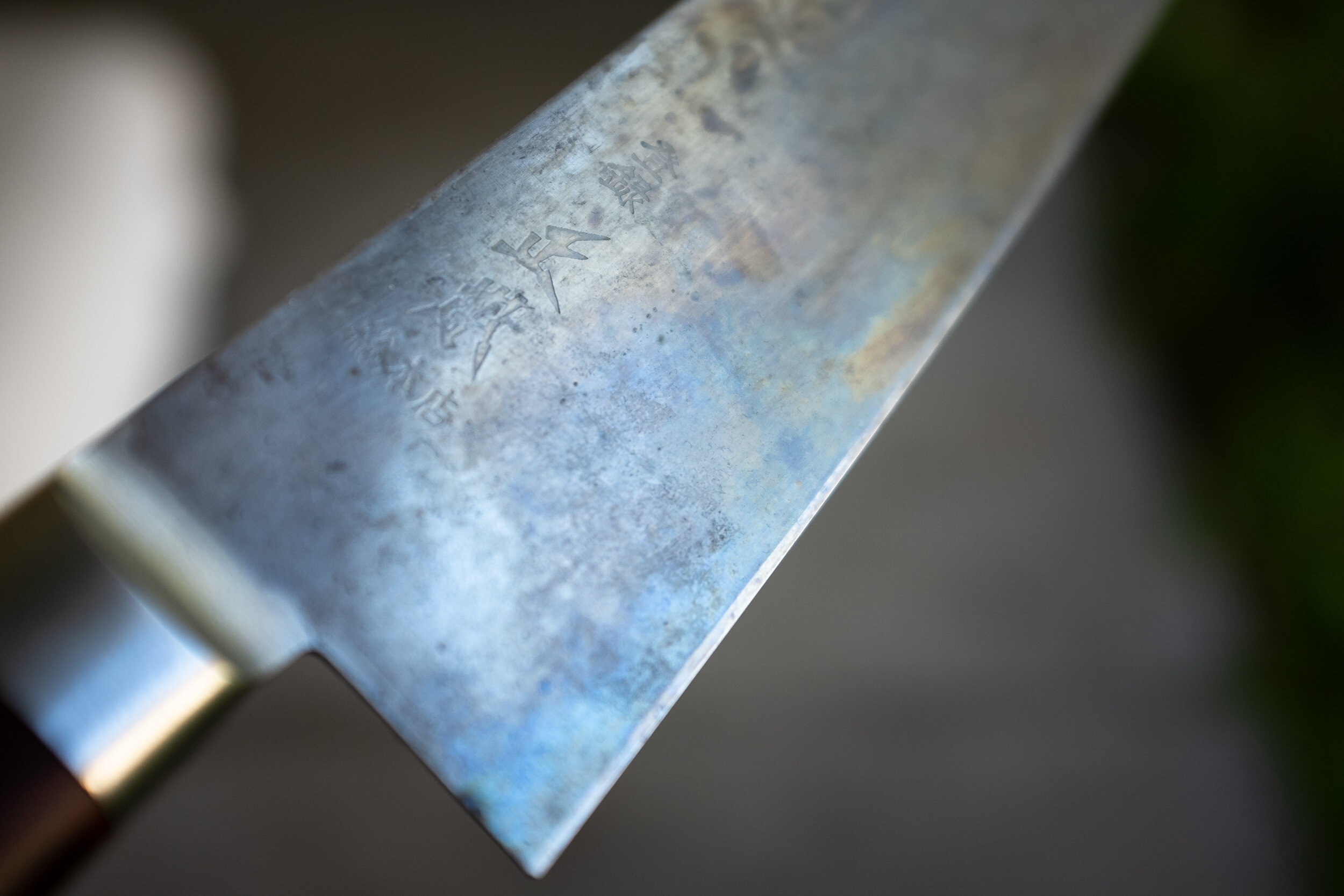There is no perfect steel. Some steels are more suited for certain applications that make it unsuitable for others.
Most of our knives are made from high carbon steel. ‘High carbon’ simply refers to steel with over ~.6% carbon. Stainless knife steel also contains over .6% carbon but must contain more than 13% chromium to be considered ‘stainless’. This number varies between sources.
High carbon steel does not have the level of chromium required to be considered ‘stainless’. Quality high carbon is a very pure steel, being essentially only iron and carbon. The carbides that form in high carbon steel are typically less than 2 microns, whilst the carbides in stainless steels are often greater than 10 microns. What this means is that the smaller carbides in high carbon allow a super fine edge with greater toughness.
The chromium carbides formed in stainless steel are also harder than those formed in high carbon steels - increasing wear resistance. This increase in wear resistance makes for a blade that is much more difficult to sharpen and maintain. For those who sharpen their own knives, this increased wear resistance can turn sharpening into a chore.
The tradeoff is that high carbon steel can rust if not cared for properly. It is normal for a carbon steel knife to develop a patina, this is a healthy form of oxidation that develops slowly and acts as a protective barrier on the knife. In the early stages of a patina, the oxidation can rub off onto food. Oxidation is totally harmless but can leave a slight taste on food - simply soak the food in water to remove the oxidation. Once the patina is properly developed, the knife will be much less reactive.
Patinas can be a dull grey or brilliant blues, yellows and purples. Patinas show the life and character of your knife. They can easily be polished, reduced or removed entirely to bring the knife back to a clean finish. Different steels react to different chemicals in their own way. Salt, acid and moisture all contribute to oxidation and develop different colours.
In recent times, stainless steels have advanced and there are many stainless steels classified as ‘super steels’. Whilst these steels can easily match or better the performance of simple carbon steels, they are expensive to purchase and process. This increase in production cost leads to a more expensive knife. The alloys added to these steels to improve performance have a drawback in that they can make the steel much harder to sharpen and maintain.
Whilst stainless is the correct choice for some applications, we believe that the care required to look after a high carbon steel knife leads to respect for the tool. Processing iron ore comes at a huge cost to our planet and the essential tools that we make from those processes deserve to be treated with care.
To get the best of both worlds, we recommend a high carbon cutting core with a stainless steel jacket, please check out our page on san mai to learn more.


